Appearance Brown crystals Molar mass 406.93 g/mol Melting point 70 °C | Formula C9H6Cl6O3S Density 1.74 g/cm³ Soluble in Water | |
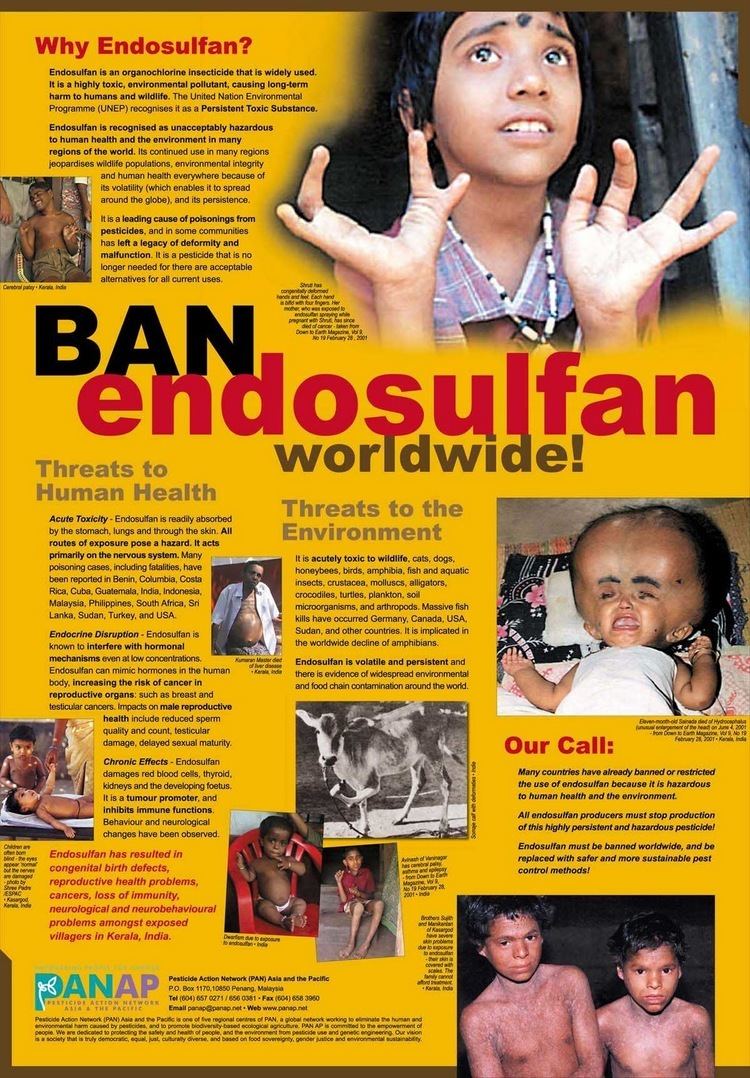 | ||
IUPAC ID 6,7,8,9,10,10-Hexachloro-1,5,5a,6,9,9a-hexahydro- 6,9-methano-2,4,3-benzodioxathiepine-3-oxide | ||
Endosulfan the kerala story
Endosulfan is an off-patent organochlorine insecticide and acaricide that is being phased out globally. The two isomers, endo and exo, are known popularly as I and II. Endosulfan sulfate is a product of oxidation containing one extra O atom attached to the S atom. Endosulfan became a highly controversial agrichemical due to its acute toxicity, potential for bioaccumulation, and role as an endocrine disruptor. Because of its threats to human health and the environment, a global ban on the manufacture and use of endosulfan was negotiated under the Stockholm Convention in April 2011. The ban has taken effect in mid-2012, with certain uses exempted for five additional years. More than 80 countries, including the European Union, Australia, New Zealand, several West African nations, the United States, Brazil, and Canada had already banned it or announced phase-outs by the time the Stockholm Convention ban was agreed upon. It is still used extensively in India, China, and few other countries. It is produced by Makhteshim Agan and several manufacturers in India and China.
Contents
- Endosulfan the kerala story
- Endosulfan issue myth and reality malayalam dr k m sreekumar questions answers
- Uses
- Production
- History of commercialization and regulation
- Health effects
- Toxicity
- Endocrine disruption
- Reproductive and developmental effects
- Endosulfan and cancer
- Environmental fate
- India
- New Zealand
- Philippines
- United States
- Australia
- Taiwan
- Brazil
- References

Endosulfan issue myth and reality malayalam dr k m sreekumar questions answers
Uses
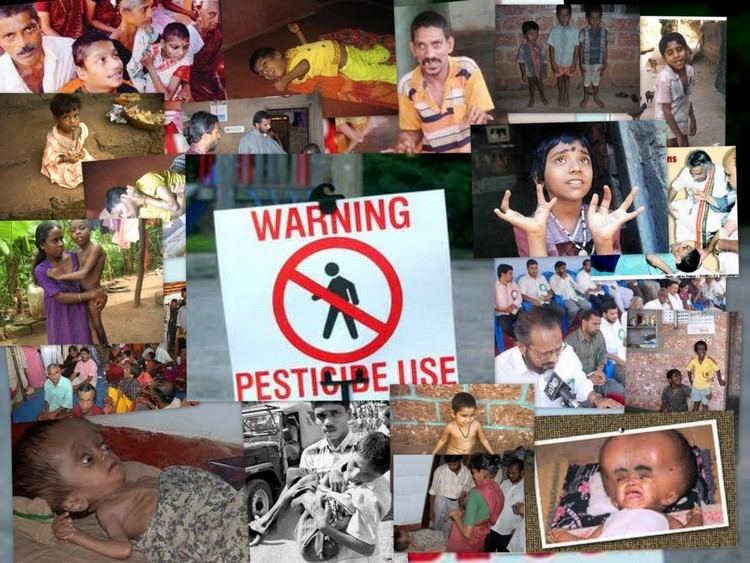
Endosulfan has been used in agriculture around the world to control insect pests including whiteflies, aphids, leafhoppers, Colorado potato beetles and cabbage worms. Due to its unique mode of action, it is useful in resistance management; however, as it is not specific, it can negatively impact populations of beneficial insects. It is, however, considered to be moderately toxic to honey bees, and it is less toxic to bees than organophosphate insecticides.
Production

The World Health Organization estimated worldwide annual production to be about 9,000 metric tonnes (t) in the early 1980s. From 1980 to 1989, worldwide consumption averaged 10,500 tonnes per year, and for the 1990s use increased to 12,800 tonnes per year.
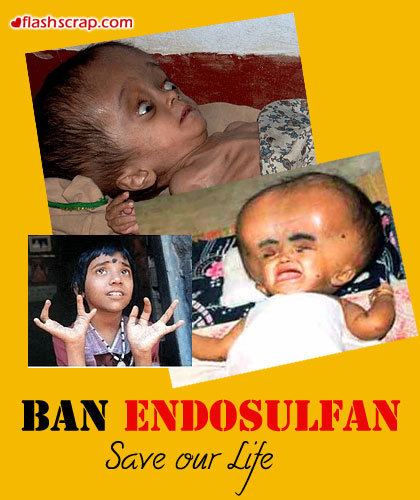
Endosulfan is a derivative of hexachlorocyclopentadiene, and is chemically similar to aldrin, chlordane, and heptachlor. Specifically, it is produced by the Diels-Alder reaction of hexachlorocyclopentadiene with cis-butene-1,4-diol and subsequent reaction of the adduct with thionyl chloride. Technical endosulfan is a 7:3 mixture of stereoisomers, designated α and β. α- and β-Endosulfan are configurational isomers arising from the pyramidal stereochemistry of the teravalent sulfur. α-Endosulfan is the more thermodynamically stable of the two, thus β-endosulfan irreversibly converts to the α form, although the conversion is slow.
History of commercialization and regulation
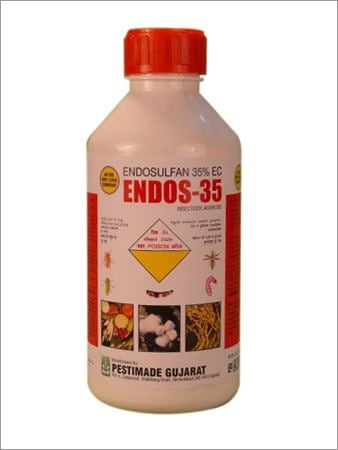
Health effects
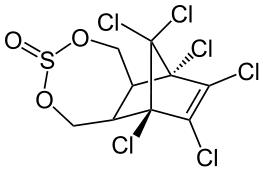
Endosulfan is one of the most toxic pesticides on the market today, responsible for many fatal pesticide poisoning incidents around the world. Endosulfan is also a xenoestrogen—a synthetic substance that imitates or enhances the effect of estrogens—and it can act as an endocrine disruptor, causing reproductive and developmental damage in both animals and humans. It has also been found to act as an aromatase inhibitor. Whether endosulfan can cause cancer is debated. With regard to consumers' intake of endosulfan from residues on food, the Food and Agriculture Organization of United Nations has concluded that long-term exposure from food is unlikely to present a public health concern, but short-term exposure can exceed acute reference doses.
Toxicity
Endosulfan is acutely neurotoxic to both insects and mammals, including humans. The US EPA classifies it as Category I: "Highly Acutely Toxic" based on a LD50 value of 30 mg/kg for female rats, while the World Health Organization classifies it as Class II "Moderately Hazardous" based on a rat LD50 of 80 mg/kg. It is a GABA-gated chloride channel antagonist, and a Ca2+, Mg2+ ATPase inhibitor. Both of these enzymes are involved in the transfer of nerve impulses. Symptoms of acute poisoning include hyperactivity, tremors, convulsions, lack of coordination, staggering, difficulty breathing, nausea and vomiting, diarrhea, and in severe cases, unconsciousness. Doses as low as 35 mg/kg have been documented to cause death in humans, and many cases of sublethal poisoning have resulted in permanent brain damage. Farm workers with chronic endosulfan exposure are at risk of rashes and skin irritation.
EPA's acute reference dose for dietary exposure to endosulfan is 0.015 mg/kg for adults and 0.0015 mg/kg for children. For chronic dietary expsoure, the EPA references doses are 0.006 mg/(kg·day) and 0.0006 mg/(kg·day) for adults and children, respectively.
Endocrine disruption
Theo Colborn, an expert on endocrine disruption, lists endosulfan as a known endocrine disruptor, and both the EPA and the Agency for Toxic Substances and Disease Registry consider endosulfan to be a potential endocrine disruptor. Numerous in vitro studies have documented its potential to disrupt hormones and animal studies have demonstrated its reproductive and developmental toxicity, especially among males. A number of studies have documented that it acts as an antiandrogen in animals. Endosulfan has shown to affect crustacean molt cycles, which are important biological and endocrine-controlled physiological processes essential for the crustacean growth and reproduction. Environmentally relevant doses of endosulfan equal to the EPA's safe dose of 0.006 mg/kg/day have been found to affect gene expression in female rats similarly to the effects of estrogen. It is not known whether endosulfan is a human teratogen (an agent that causes birth defects), though it has significant teratogenic effects in laboratory rats. A 2009 assessment concluded the endocrine disruption in rats occurs only at endosulfan doses that cause neurotoxicity.
Reproductive and developmental effects
Several studies have documented that endosulfan can also affect human development. Researchers studying children from many villages in Kasargod District, Kerala, India, have linked endosulfan exposure to delays in sexual maturity among boys. Endosulfan was the only pesticide applied to cashew plantations in the villages for 20 years, and had contaminated the village environment. The researchers compared the villagers to a control group of boys from a demographically similar village that lacked a history of endosulfan pollution. Relative to the control group, the exposed boys had high levels of endosulfan in their bodies, lower levels of testosterone, and delays in reaching sexual maturity. Birth defects of the male reproductive system, including cryptorchidism, were also more prevalent in the study group. The researchers concluded, "our study results suggest that endosulfan exposure in male children may delay sexual maturity and interfere with sex hormone synthesis." Increased incidences of cryptorchidism have been observed in other studies of endosulfan exposed populations.
A 2007 study by the California Department of Public Health found that women who lived near farm fields sprayed with endosulfan and the related organochloride pesticide dicofol during the first eight weeks of pregnancy are several times more likely to give birth to children with autism. This is the first study to look for an association between endosulfan and autism, and additional study is needed to confirm the connection. A 2009 assessment concluded that epidemiology and rodent studies that suggest male reproductive and autism effects are open to other interpretations, and that developmental or reproductive toxicity in rats occurs only at endosulfan doses that cause neurotoxicity.
Endosulfan and cancer
Endosulfan is not listed as known, probable, or possible carcinogen by the EPA, IARC, or other agencies. No epidemiological studies link exposure to endosulfan specifically to cancer in humans, but in vitro assays have shown that endosulfan can promote proliferation of human breast cancer cells. Evidence of carcinogenicity in animals is mixed.
In a 2016 study by the Department of Biochemistry, Indian Institute of Science, Bangalore published in Carcinogenesis, Endosulfan was found to induce reactive oxygen species (ROS) in a concentration and time-dependent manner leading to double-stranded breaks in the DNA and also found to favour subsequent erroneous DNA repair.
Environmental fate
Endosulfan is a ubiquitous environmental contaminant. The chemical is semivolatile and persistent to degradation processes in the environment. Endosulfan is subject to long-range atmospheric transport, i.e. it can travel long distances from where it is used. Thus, it occurs in many environmental compartments. For example, a 2008 report by the National Park Service found that endosulfan commonly contaminates air, water, plants, and fish of national parks in the US. Most of these parks are far from areas where endosulfan is used. Endosulfan has been found in remote locations such as the Arctic Ocean, as well as in the Antarctic atmosphere. The pesticide has also been detected in dust from the Sahara Desert collected in the Caribbean after being blown across the Atlantic Ocean. The compound has been shown to be one of the most abundant organochlorine pesticides in the global atmosphere.
The compound breaks down into endosulfan sulfate, endosulfan diol, and endosulfan furan, all of which have structures similar to the parent compound and, according to the EPA, "are also of toxicological concern…The estimated half-lives for the combined toxic residues (endosulfan plus endosulfan sulfate) [range] from roughly 9 months to 6 years." The EPA concluded, "[b]ased on environmental fate laboratory studies, terrestrial field dissipation studies, available models, monitoring studies, and published literature, it can be concluded that endosulfan is a very persistent chemical which may stay in the environment for lengthy periods of time, particularly in acid media." The EPA also concluded, "[e]ndosulfan has relatively high potential to bioaccumulate in fish." It is also toxic to amphibians; low levels have been found to kill tadpoles.
In 2009, the committee of scientific experts of the Stockholm Convention concluded, "endosulfan is likely, as a result of long range environmental transport, to lead to significant adverse human health and environmental effects such that global action is warranted." In May 2011, the Stockholm Convention committee approved the recommendation for elimination of production and use of endosulfan and its isomers worldwide. This is, however, subject to certain exemptions. Overall, this will lead to its elimination from the global markets.
India
Although classified as a yellow label (highly toxic) pesticide by the Central Insecticides Board, India is one of the largest producers and the largest consumer of endosulfan in the world. Of the total volume manufactured in India, three companies — Excel Crop Care, Hindustan Insecticides Ltd, and Coromandal Fertilizers — produce 4,500 tonnes annually for domestic use and another 4,000 tonnes for export. Endosulfan is widely used in most of the plantation crops in India. The toxicity of endosulfan and health issues due to its bioaccumulation came under media attention when health issues precipitated in the Kasargod District (of Kerala) were publicised. This inspired protests, and the pesticide was banned in Kerala as early as 2001, following a report by the National Institute of Occupational Health. In the Stockholm Convention on Persistent Organic Pollutants of 2011, when an international consensus arose for the global ban of the pesticide, India opposed this move due to pressure from the endosulfan manufacturing companies. This flared up the protest, and while India still maintained its stance, the global conference decided on a global ban, for which India asked a remission for 10 years. Later, on a petition filed in the Supreme Court of India, the production, storage, sale and use of the pesticide was temporarily banned on 13 May 2011, and later permanently by the end of 2011.
The Karnataka government also banned the use of endosulfan with immediate effect. Briefing presspersons after the State Cabinet meeting, Minister for Higher Education V.S. Acharya said the Cabinet discussed the harmful effects of endosulfan on the health of farmers and people living in rural areas. The government will now invoke the provisions of the Insecticides Act, 1968 (a Central act) and write a letter to the Union Government about the ban. Minister for Energy, and Food and Civil Supplies Shobha Karandlaje, who has been spearheading a movement seeking a ban on endosulfan, said, "I am grateful to Chief Minister B.S. Yeddyurappa and members of the Cabinet for approving the ban.
Rajendra Singh Rana has written a letter to Prime Minister Manmohan Singh demanding the withdrawal of the National Institute of Occupational Health (NIOH) study on Endosulfan titled "Report Of The Investigation Of Unusual Illness" allegedly produced by the Endosulfan exposure in Padre village of Kasargod district in north Kerala. In his statement Mr. Rana said "The NIOH report is flawed. I'm in complete agreement with what the workers have to say on this. In fact, I have already made representation to the Prime Minister and concerned Union Ministers of health and environment demanding immediate withdrawal of the report," as reported by The Economic Times and Outlook India
Mrs. Vibhavari Dave, local leader and Member of Legislative Assembly (MLA), from Bhavnagar, Gujarat, voiced her concerns on the impact of ban of endosulfan on families and workers of Bhavnagar. She was a part of the delegation with Bhavnagar MP, Rajendra Singh Rana, which submitted a memorandum to the district collector's office to withdraw the NIOH report calling for ban of endosulfan. The Pollution Control Board of the Government of Kerala, prohibited the use of endosulfan in the state of Kerala on 10 November 2010. On February 18, 2011, the Karnataka government followed suit and suspended the use of endosulfan for a period of 60 days in the state. Indian Union Minister of Agriculture Sharad Pawar has ruled out implementing a similar ban at the national level despite the fact that endosulfan has banned in 63 countries, including the European Union, Australia, and New Zealand.
The Government of Gujarat had initiated a study in response to the workers' rally in Bhavnagar and representations made by Sishuvihar, an NGO based in Ahmadabad. The committee constituted for the study also included former Deputy Director of NIOH, Ahmadabad. The committee noted that the WHO, FAO, IARC and US EPA have indicated that endosulfan is not carcinogenic, not teratogenic, not mutagenic and not genotoxic. The highlight of this report is the farmer exposure study based on analysis of their blood reports for residues of endosulfan and the absence of any residues. This corroborates the lack of residues in worker-exposure studies.
The Supreme Court passed interim order on May 13, 2011, in a Writ Petition filed by Democratic Youth Federation of India, (DYFI), a youth wing of Communist Party of India (Marxist) in the backdrop of the incidents reported in Kasargode, Kerala, and banned the production, distribution and use of endosulfan in India because the pesticide has debilitating effects on humans and the environment. The Centre for Science and Environment (CSE) welcomed this order, and called it a 'resounding defeat' for the pesticide industry which has been promoting this deadly toxin. A 2001 study by CSE had established the linkages between the aerial spraying of the pesticide and the growing health disorders in Kasaragode.Over the years, other studies have confirmed these findings, and the health hazards associated with endosulfan are now widely known and accepted. However, in July 2012, the Government asked the Supreme Court to allow use of the pesticide in all states except Kerala and Karnataka, as these states are ready to use it for pest control. India will phase out all endosulfan use by 2017.
New Zealand
Endosulfan was banned in New Zealand by the Environmental Risk Management Authority effective January 2009 after a concerted campaign by environmental groups and the Green Party.
Philippines
A shipment of about 10 tonnes of endosulfan was illegally stowed on the ill-fated MV Princess of the Stars, a ferry that sank off the waters of Romblon (Sibuyan Island), Philippines, during a storm in June 2008. Search, rescue, and salvage efforts were suspended when the endosulfan shipment was discovered, and blood samples from divers at the scene were sent to Malaysia for analysis. The Department of Health of the Philippines has temporarily banned the consumption of fish caught in the area. Endosulfan is classified as a "Severe Marine Pollutant" by the International Maritime Dangerous Goods Code.
United States
In the United States, endosulfan is only registered for agricultural use, and these uses are being phased out. It has been used extensively on cotton, potatoes, tomatoes, and apples according to the EPA. The EPA estimates that 626 thousand kg of endosulfan were used annually from 1987 to 1997. The US exported more than 140,000 lb of endosulfan from 2001 to 2003, mostly to Latin America, but production and export has since stopped.
In California, endosulfan contamination from the San Joaquin Valley has been implicated in the extirpation of the mountain yellow-legged frog from parts of the nearby Sierra Nevada. In Florida, levels of contamination the Everglades and Biscayne Bay are high enough to pose a threat to some aquatic organisms.
In 2007, the EPA announced it was rereviewing the safety of endosulfan. The following year, Pesticide Action Network and NRDC petitioned the EPA to ban endosulfan, and a coalition of environmental and labor groups sued the EPA seeking to overturn its 2002 decision to not ban endosulfan. In June 2010, the EPA announced it was negotiating a phaseout of all uses with the sole US manufacturer, Makhteshim Agan, and a complete ban on the compound.
An official statement by Makhteshim Agan of North America (MANA) states, "From a scientific standpoint, MANA continues to disagree fundamentally with EPA's conclusions regarding endosulfan and believes that key uses are still eligible for re-registration." The statement adds, "However, given the fact that the endosulfan market is quite small and the cost of developing and submitting additional data high, we have decided to voluntarily negotiate an agreement with EPA that provides growers with an adequate time frame to find alternatives for the damaging insect pests currently controlled by endosulfan."
Australia
Australia banned endosulfan on October 12, 2010, with a two-year phase-out for stock of endosulfan-containing products. Australia had, in 2008, announced endosulfan would not be banned. Citing New Zealand's ban, the Australian Greens called for "zero tolerance" of endosulfan residue on food.
Taiwan
US apples with endosulfan are now allowed to be exported to Taiwan, although the ROC government denied any US pressure on it.
Brazil
Brazil decreed total ban of the substance from July 31, 2013, being forbidden imports of the product from July 31, 2011, date in which national production and utilization begins to be phased out gradually.
